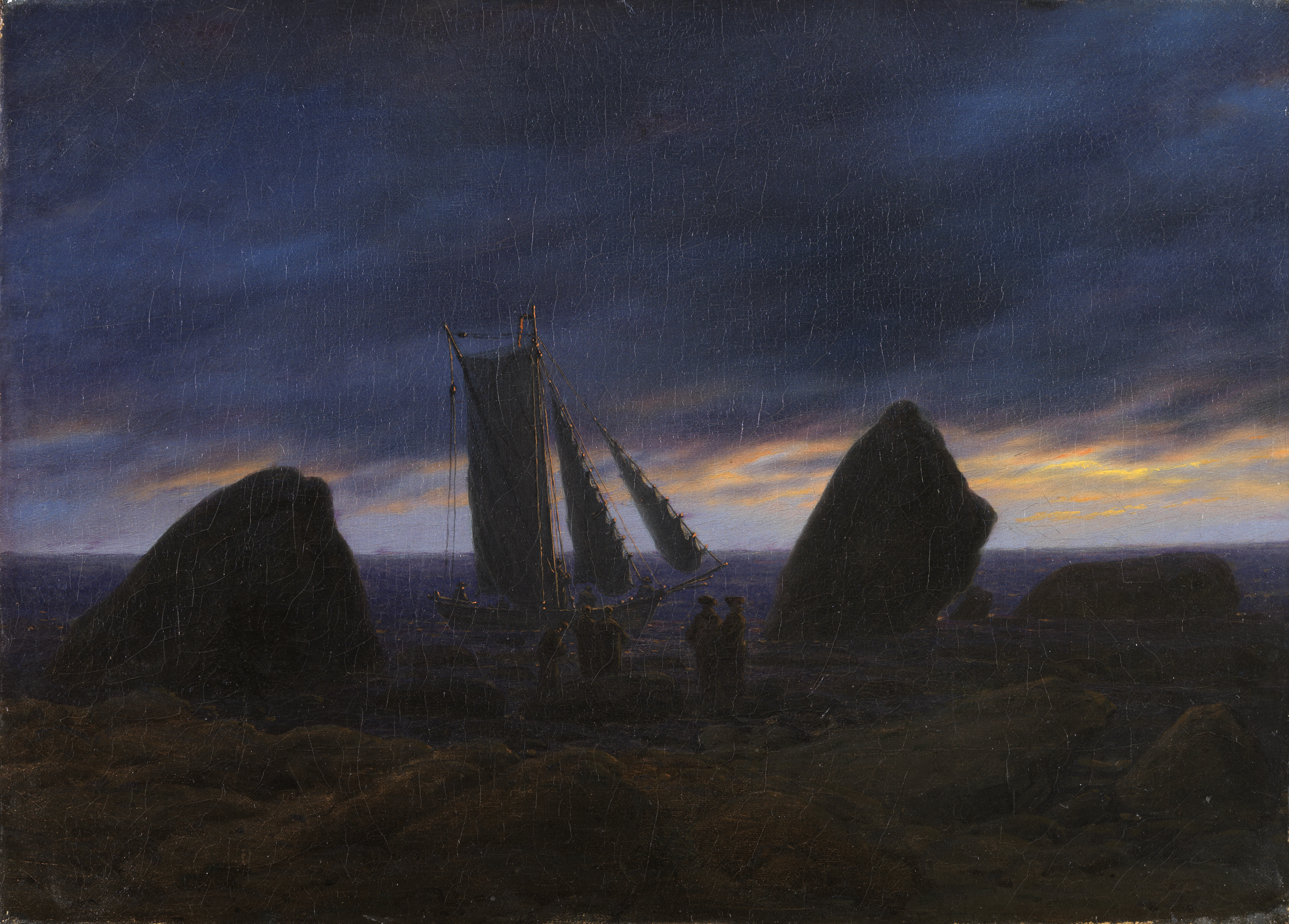On this day in 1774, Caspar David Friedrich, a German Romantic landscape painter best known for his mid-period allegorical landscapes, was born. His primary interest was the contemplation of nature, and his often symbolic and anti-classical work seeks to convey a subjective, emotional response to the natural world.
The painting shows a sailing boat heading away from the Baltic shore with several fishermen aboard. The unidentified location is probably Pomerania, near Rügen, because this was used in so many of Friedrich's views, even though it does not correspond to any of the painter's sketches from nature. The scene, set at twilight, shows a group of men with their backs turned to the viewer, observing the departing craft, although apparently without making eye-contact with the sailors. The presence of these men, dressed in traditional German costume, is not easy to account for, and contributes to the enigmatic nature of the seascape. Their attitude and proximity to the boat suggest that they may have lent some aid to the fisherman, perhaps helping them free their boat after it had run aground on the rocky shore. It is only when we compare the composition to a drawing made by the young Friedrich in Berlin in 1799, entitled Farewell at the Shore (Kunsthalle Mannheim), and depicting an identical boat and similar figures, that we realize that this is indeed a farewell scene. Friedrich's central motif is thus the separation of the two groups of men, those who have embarked and those remaining on shore, and the positions of each in nature. The allegorical reading of this seascape lies in the contrast between the two groups in a situation involving leave-taking.
See you tomorrow!
P.S. Here's a selection of ten of the most famous works of Friedrich. : )


 Caspar David Friedrich
Caspar David Friedrich